Goddess Chamunda, a fierce and compassionate form of Goddess Durga, embodies the ultimate power of destruction and protection in Hindu mythology. Revered as a deity who eradicates evil and brings spiritual growth, she is celebrated for her ability to guide her devotees through challenging times. As a symbol of empowerment and divine wrath, Goddess Chamunda holds a significant place in the Hindu pantheon, invoking respect, courage, and unwavering devotion. This article delves into her origin, divine qualities, and the profound impact of her worship on her devotees.
Who is Goddess Chamunda?
Goddess Chamunda is one of the fiercest and most revered forms of the Divine Mother in Hinduism. Known for her wrath and power to annihilate evil, she is a manifestation of Goddess Durga, embodying both destruction and protection. Goddess Chamunda's significance is immense in the Hindu pantheon, where she is seen as a protector, liberator, and a symbol of supreme strength. Let's explore her identity, role, and the cosmic power she represents in Hindu mythology.
Identity and Role in the Hindu Pantheon:
Goddess Chamunda is a prominent and fierce manifestation of Goddess Durga, known for her annihilation of evil and protection of her devotees. She represents the transformative power of Shakti, the feminine energy that governs the universe. Chamunda is considered one of the seven Matrikas (mother goddesses) and is often depicted as a protector against darkness and negativity. In the vast Hindu pantheon, she stands as a symbol of divine wrath and justice, using her formidable strength to restore balance and harmony.
Family Lineage and Connections to Other Gods:
Chamunda is closely associated with Goddess Durga, often seen as an aspect of her destructive power. As a manifestation of Durga, she is also linked to Lord Shiva, with whom Durga is united. She is considered to be the embodiment of Parvati's energy, the consort of Lord Shiva. Chamunda is also connected to Kali, another fierce form of Parvati, and they share similar iconography, both representing the force of destruction and regeneration.
Associated Elements (Vehicle/Vahana, Weapon, Symbols):
Vehicle (Vahana):
Goddess Chamunda's vahana is typically depicted as an owl, symbolizing wisdom, vigilance, and protection. The owl also represents the ability to see through illusions, aligning with Chamunda’s role in destroying darkness and ignorance.
Weapon:
Goddess Chamunda is depicted wielding a variety of weapons, including a sword, a trident, and a mace. These weapons symbolize her ability to combat evil and defend righteousness. She is often seen holding the head of the demon Munda, whom she defeated, showcasing her power to conquer malevolent forces.
Symbols: Chamunda is frequently depicted with a skull garland around her neck, symbolizing the destruction of evil and the cycle of life and death. Her protruding tongue and wide eyes signify the fierce, unstoppable nature of her wrath. Her image often includes elements like a severed demon head, reinforcing her role in annihilating evil.
Significance of Goddess Chamunda
Goddess Chamunda holds immense philosophical and spiritual significance within the Hindu tradition, especially in the Shakti cult. She is seen as the embodiment of the fierce aspect of Goddess Durga, symbolizing the triumph of good over evil and the destruction of negative forces. Her role extends beyond mere destruction; she is the protector of her devotees, ensuring their safety from adversities and ill-willed forces. Her fierce nature represents the powerful, untamed aspect of the Divine Feminine, providing both protection and strength to those who seek her blessings.
Philosophically, Goddess Chamunda represents the cycle of life, death, and rebirth. She helps transcend the illusions of ego, attachment, and pride, facilitating spiritual liberation by destroying the inner demons that block one's path to enlightenment. Her fiery form and the act of annihilating evil symbolize the destruction of ignorance and the clearing of mental and emotional obstacles.
Regionally, Goddess Chamunda is predominantly worshipped in states like Maharashtra, Karnataka, and Himachal Pradesh, where she is deeply revered during major festivals like Navratri and Dussehra. Her temples, such as the Chamundeshwari Temple in Mysore, are sites of immense devotion and pilgrimage. Locally, Chamunda is often considered a family deity (Kuladevi) in many regions, with offerings made to invoke her blessings of strength and protection.
Festivals Dedicated to Goddess Chamunda
Navratri:
Goddess Chamunda is especially honoured during the Navratri festival, a nine-day celebration that marks the victory of good over evil. During the second phase of the festival, devotees pay homage to Chamunda, seeking her blessings for strength, wisdom, and protection.
Dussehra:
On the day of Dussehra, which celebrates the victory of Lord Rama over Ravana and Goddess Durga's victory over Mahishasura, Chamunda's fierce form is invoked as a symbol of empowerment and the destruction of evil forces.
Chamunda Jayanti:
In some regions, a special day is dedicated to Goddess Chamunda, known as Chamunda Jayanti. It is observed with prayers and rituals, celebrating her power and significance in protecting devotees from all forms of harm.
These festivals, along with other local celebrations, highlight Goddess Chamunda's pivotal role in the spiritual and religious lives of her devotees, especially those seeking her protection and guidance through life’s challenges.
Iconography & Symbolism of Goddess Chamunda
Goddess Chamunda’s iconography is deeply symbolic and laden with spiritual meaning, reflecting her fierce and powerful nature. She is often depicted with a scrawny, emaciated form, which represents the power of destruction and purification. Her shrivelled body, protruding ribs, and veins are symbolic of her intense austerity, spiritual discipline, and the process of annihilating the negative energies of the universe. This physical representation also signifies the transformative power of the goddess, illustrating that in the destruction of evil, there is always space for renewal and transformation.
Physical Appearance and Symbolic Elements:
Heads and Hands:
Goddess Chamunda is usually shown with multiple arms, often four or eight. These arms carry various symbolic elements such as a trident (representing the three gunas of nature: creation, preservation, and destruction), a mace, a bell, a sword, a bowl, and a skull, symbolizing her ability to destroy evil and purify the universe. The skull represents the severed head of the demon Munda, which she is said to have killed, symbolizing the destruction of ignorance and ego.
Protruding Tongue and Eyes:
Her tongue, often depicted as red and protruding, symbolizes the insatiable hunger for the destruction of evil. Her eyes are usually depicted as sunken and fiery, conveying both the wrath of her form and the clarity with which she sees through illusion.
Clothing:
Goddess Chamunda is typically adorned in tiger skin, symbolizing her dominion over wildness and untamed forces. The tiger, as her vehicle, represents strength, courage, and fearlessness.
Crown and Jewellery:
Her crown, often adorned with serpents, reflects her mastery over all living beings, while the jewellery represents the wealth of wisdom and knowledge she bestows upon her devotees. The snaked ornament symbolizes control over both the spiritual and material world.
Art, Sculptures, and Temple Depictions:
In temples dedicated to Goddess Chamunda, especially those in Karnataka, Maharashtra, and Himachal Pradesh, her form is portrayed in various sculptures and paintings, reflecting her role as a fierce protector. Many of these images show her seated on a lion or with one foot lifted in a dancing pose, which signifies the cyclical nature of life and the destruction of evil.
In some of the iconic sculptures, like those in the Chamundeshwari Temple of Mysore, she is depicted standing or seated in the Lalitasana posture (cross-legged), exuding both grace and power. The temples often use sandstone and black basalt to carve her figure, symbolizing her strong, unyielding nature.
Colour Symbolism, Posture, and Mudras:
Colour Symbolism:
The colour red plays a prominent role in Chamunda's iconography, symbolizing both the bloodshed of demons she defeats and the fiery, passionate energy that fuels her role as the destroyer of evil. Additionally, black and dark hues often symbolize her deep connection with Lord Shiva (Rudra), her consort, and her connection to the formless, cosmic energy.
Posture:
The posture of Goddess Chamunda is typically one of dynamic motion or readiness for battle. She is often shown either standing with one leg raised (symbolizing victory and strength) or seated in a meditative position, signifying her ability to balance destruction with the stillness of the divine presence. In some depictions, she is shown in the pose of Lalitasana, a graceful, seated posture that reflects her divine power and tranquillity after destruction.
Mudras :
The hand gestures (mudras) of Goddess Chamunda carry profound spiritual meanings. One hand is often shown in the Abhaya Mudra (gesture of fearlessness), which assures devotees that she will protect them from harm. Another hand may hold a Kapala (skull) or Sword, which represent the destruction of ego and the purification of the soul. The Varada Mudra (gesture of granting boons) is also sometimes depicted, offering blessings to her devotees.
Together, these physical attributes, gestures, and symbolism convey the multi-faceted nature of Goddess Chamunda, one who destroys evil, protects her devotees, and paves the way for spiritual liberation.
Birth or Origin of Goddess Chamunda
Goddess Chamunda is a powerful and revered form of Shakti in Hindu mythology, and her origin is detailed in various scriptures, including the Devi Mahatmya, Markandeya Purana, and Agni Purana. Goddess Chamunda is believed to have emerged as a fierce and destructive force from the forehead of Goddess Durga, during the battle against the demons Chanda and Munda, who were wreaking havoc in the cosmos.
Mythological Origins:
- From the Forehead of Durga: According to the Devi Mahatmya, during the war between Durga and the two demons, Chanda and Munda, Goddess Durga summoned Goddess Kali to assist in battle. Kali, in turn, manifested as Chamunda, a ferocious and destructive force. She slayed both Chanda and Munda, and since her name was derived from the demons she destroyed, Chamunda became known as the 'slayer of Chanda and Munda.'
- Goddess Chamunda as the Fierce Form of Kali: Chamunda is seen as a more intense and fierce aspect of Kali, often associated with blood, destruction, and death. Her fierceness reflects the transformative power of Shakti, the goddess who not only destroys but also rejuvenates, clears away negativity, and purifies the cosmic forces.
- Part of the Seven Matrikas: Goddess Chamunda is also one of the Saptamatrikas (seven mother goddesses) who are believed to be the manifestations of Shakti, created to assist the gods in destroying the evil forces threatening the universe. These goddesses represent different aspects of life and cosmic order, with Chamunda embodying the destructive and cleansing energy required to combat evil.
- Connection to Lord Shiva and Rudra: As part of her association with Lord Shiva, some interpretations of Goddess Chamunda's origin link her to the Rudra form of Shiva. In some traditions, she is seen as an emanation of Parvati, Shiva's consort, and as a divine force that exists to destroy ignorance and evil, clearing the path for enlightenment.
Connection to Cosmic Events and Scriptures:
- Mahishasura Mardini and the Killing of Mahishasura: Chamunda is also associated with the legendary slaying of Mahishasura, the demon who could change forms and was granted a boon that he could only be killed by a woman. In this tale, Goddess Durga, in the form of Chamunda, defeats Mahishasura and restores cosmic order. This tale of Mahishasura Mardini (slayer of Mahishasura) is one of the central events that highlight Chamunda's role as a protector and purifier of the universe.
- The Role in Cosmic Balance: Goddess Chamunda is said to be a symbol of tapasya (penance) and austerity, reflecting her role as a force of destruction and regeneration. Her role in the cosmic events is that of a purifying force that clears the world of negative energies, restoring balance and order.
- Her Role in Tantric Practices: Goddess Chamunda is an integral part of Tantric worship, where she is revered as a deity that can bestow both material and spiritual benefits. The practice of Tantra associates her with fire, the elimination of fear, and the destruction of impurities. She is invoked in esoteric rituals that require an intense connection to the divine energy of the goddess.
Cosmic Connections:
- Destruction and Rebirth: Goddess Chamunda's role as a fierce, destructive force mirrors the cyclical nature of creation, preservation, and dissolution inherent in Hindu cosmology. Her destructive force is not seen as negative but as an essential component of the cosmic process, ensuring that evil is eradicated, and the universe can be renewed. Her actions represent the eternal cycle of destruction that leads to new creation, echoing the principles of Srishti (creation), Sthiti (preservation), and Samhara (destruction).
- The Destruction of Evil: Goddess Chamunda’s birth story and her associated symbolism connect deeply with the concepts of Dharma (cosmic law and order) and Adharma (unrighteousness). Her very existence ensures that unrighteous forces do not overpower the universe. By slaying the demons Chanda, Munda, and Mahishasura, she upholds the laws of righteousness, ensuring that the balance of the universe is not disturbed by evil.
Mantras Dedicated to Goddess Chamunda
Goddess Chamunda is revered through a series of powerful mantras that invoke her fierce, protective energy, helping her devotees overcome obstacles and negativity. These mantras are designed to invoke her blessings for victory over enemies, mental peace, strength, and spiritual progress. Here's a look at some of the key mantras dedicated to Goddess Chamunda and their meanings:
1. Chamunda Beej Mantra
Mantra:
Om Braam Breem Broom Brahmcharinyai Namah
Meaning:
This mantra is a fundamental and potent invocation of Goddess Chamunda. 'Braam' represents the destructive force of the Goddess, while 'Breem' and 'Broom' denote her role in eliminating negativity and evil forces. 'Brahmcharinyai' refers to her as the one who practices austerity (penance). Chanting this mantra is believed to invoke the Goddess’s protection and blessings for removing fear and obstacles in one’s life.
Benefits of Chanting:
- Provides spiritual protection against negative influences.
- Enhances inner strength and willpower.
- Removes obstacles and enemies, promoting peace and stability.
- Fosters mental clarity and spiritual insight.
2. Chamunda Stotra
Mantra:
Dadhana Karpadma Abhyamaksh Mala Kamandalu |
Devi Prasidatu Mayi Brahmacharinya Nuttama ||
Meaning:
This stotra praises Goddess Chamunda as the embodiment of knowledge and strength, holding a water pot (Kamandalu), a rosary, and various other divine objects in her hands. She is sought after for her mercy and blessings, as the most supreme form of the goddess who listens to the prayers of her devotees.
Benefits of Chanting:
- Fosters a sense of devotion and connection to the divine.
- Enhances knowledge, wisdom, and spiritual awareness.
- Grants blessings of peace and harmony to the devotee’s life.
- Helps in overcoming emotional turmoil and mental blocks.
3. Durga Saptasati (Chamunda Form)
Mantra:
Jaya Durga Jaya Durga
Jaya Chamunda Jaya Chamunda
Meaning:
This mantra is a part of the Durga Saptasati (also known as the Devi Mahatmya) and praises Goddess Durga in her fierce form as Chamunda. It is often recited to invoke the power and strength of the Goddess in her most protective and wrathful form.
Benefits of Chanting:
- Helps remove negative energies from the surrounding environment.
- Provides strength and protection against enemies and harmful influences.
- Encourages fearlessness and enhances inner strength.
- Grants blessings for success and victory in personal and professional endeavours.
4. Rakta Chamunda Mantra
Mantra:
Om Rakta Chamundayai Namah
Meaning:
This mantra is dedicated to the fiery form of Goddess Chamunda, known as Rakta Chamunda, who destroys evil and cleanses negative energies. It is especially invoked when one seeks protection from enemies or harmful forces, whether in personal, spiritual, or material aspects.
Benefits of Chanting:
- Purges the mind and soul of negativity and harmful influences.
- Helps in overcoming adversities, especially in challenging times.
- Protects against external attacks and malevolent energies.
- Invokes strength and courage during personal battles or struggles.
5. Chamunda Gayatri Mantra
Mantra:
Om Hrim Chamundayai Vidmahe
Vishnu Patni Vidhimahi
Tanno Chamunda Prachodayat
Meaning:
This Gayatri mantra calls upon Goddess Chamunda to bless the devotee with strength, wisdom, and divine protection. It praises her as the consort of Lord Vishnu, invoking her to guide the devotee towards spiritual enlightenment and protection.
Benefits of Chanting:
- Brings mental peace and serenity.
- Helps cultivate clarity of thought and spiritual understanding.
- Offers divine protection from all harm and negativity.
- Enhances overall spiritual progress and fosters personal growth.
How to Worship Goddess Chamunda: A Guide to Pleasing the Divine Mother
Goddess Chamunda, the fierce and powerful form of Goddess Durga, is known for her ability to remove obstacles, destroy evil, and protect her devotees. Worshipping her with dedication and sincerity ensures that her divine blessings bring protection, strength, and spiritual progress. To effectively please Goddess Chamunda, both the philosophical and practical aspects of worship should be followed, as she embodies both destructive power and maternal compassion.
Recommended Offerings and Worship Practices
Offerings of Red Flowers and Fruits: Red flowers, especially hibiscus, are highly favored by Goddess Chamunda. These represent her fiery and passionate nature. Fruits like pomegranates and bananas are also offerings that symbolize fertility, prosperity, and nourishment, essential aspects of her nurturing side.
- Sweets and Prasads: Traditionally, devotees offer sweets such as 'pista barfi' or 'laddoos' made from jaggery and sesame. These represent the sweetness and grace of the Goddess, balancing her fierce demeanor with her compassionate nature.
- Light a Lamp: Lighting a ghee lamp (called Akhand Jyoti) is an essential part of worship, especially during the night, as it signifies the removal of darkness and ignorance. This practice is rooted in the Goddess's role as a light in the lives of her followers, dispelling evil and guiding them toward spiritual wisdom.
- Offerings of Water and Betel Leaves: As part of traditional practices, offering water from the Ganges (or any pure water) in a silver pot (Kalash) is considered sacred. Betel leaves, betel nuts, and raw coconut are also regularly offered to Goddess Chamunda during pujas, representing purity and the removal of impurities.
- Reciting Mantras and Chants: The most powerful way to invoke the Goddess's blessings is through chanting her mantras. The Chamunda Beej Mantra and Chamunda Stotra should be recited regularly, either 108 times using a mala or as part of a formal prayer.
- Animal and Plant Offerings: Traditionally, Goddess Chamunda was associated with sacrificial offerings of animals, symbolizing the destruction of evil forces. However, in contemporary worship, offering plant-based prasad (such as wheat, barley, or raw rice) is preferred, in line with the growing spiritual awareness of non-violence and eco-consciousness.
- Physical Postures and Mudras : While performing the puja, devotees are encouraged to maintain a respectful and meditative posture. The Abhaya Mudra (symbolizing protection and fearlessness) and Dhan Mudra (representing prosperity) are powerful gestures that should be practiced while offering prayers.
Dos and Don’ts
Do’s
Maintain Purity: Ensure that your surroundings are clean, as the Goddess’s energy thrives in a pure environment. Bathing before the puja and wearing clean clothes adds to the sanctity of the worship.
- Offer with Reverence: Always offer the prayers and offerings with a pure heart and mind. Chant the mantras with sincerity and focus on your intentions to invoke her protection and blessings.
- Perform the Puja on Auspicious Days: If possible, conduct the puja during Shukla Paksha Ashtami, which falls on the eighth day of the waxing moon, or Chaturdashi, when her energy is believed to be particularly potent.
- Observe Fasting: Fasting, especially on days like Navratri, helps in purifying the body and focusing the mind, making the worship more effective. A satvik (pure) diet should be maintained, avoiding tamasic (impure) food.
- Use Red and Orange: Since Goddess Chamunda is associated with fiery energy, wearing red or orange clothes while performing the puja is believed to invoke her blessings more strongly.
- Don’ts
- Avoid Negative Emotions: Do not approach the Goddess with anger, jealousy, or negative emotions. Approach her with respect, devotion, and purity of heart to receive her blessings.
- Avoid Animal Sacrifice: Traditionally, Goddess Chamunda was offered animal sacrifices. However, this practice is now considered inappropriate and has been replaced by plant-based offerings in modern worship.
- Do Not Rush the Rituals: Avoid rushing through the rituals. Take your time, and engage fully in the worship process, with a meditative mind and respectful attitude.
- Don’t Engage in Superficial Worship: Worship should be carried out with full devotion and understanding. Avoid any form of ritualistic worship that is done without respect or attention to the spiritual significance.
Best Days/Times for Prayer
Shukla Paksha Ashtami: The eighth day of the waxing moon (Shukla Paksha) is particularly auspicious for Goddess Chamunda worship. This is the ideal day to perform the puja and seek her protection and blessings.
Pradosh Period (1.5 hours before sunset): This is the most auspicious time for performing the Chamunda puja. During this time, the energy of the Goddess is said to be at its peak.
Navratri: Goddess Chamunda is especially revered during the Navratri festival, particularly on the second day when her fierce form is invoked. The entire festival period is ideal for worship, with special rituals performed in temples dedicated to her.
Chaturdashi (Fourteenth day of the waxing moon): This day is also considered auspicious for worshipping Goddess Chamunda. Performing the puja on this day is believed to bring prosperity and eliminate obstacles.
Puja Vidhi at Home for Goddess Chamunda
Here’s a simplified guide to performing the puja of Goddess Chamunda at home:
Required Materials:
- Kalash (Holy Pot) with water
- Red cloth for covering the puja area
- Swastika symbol (kumkum or red powder)
- Ghee lamp (Deepak) and incense sticks
- Flowers, fruits, and sweets
- Uncooked wheat grains (gehu)
- Sindoor (Vermilion) and Chandan (Sandalwood powder)
- Paan and Betel Nut for offerings
Step-by-Step Process:
-
Preparation:
Clean the space and place a red cloth. Set the idol or image of Goddess Chamunda on it, surrounded by offerings like flowers and fruits. -
Kalashsthapana:
Place the Kalash filled with water on the left, topped with a coconut, and surrounded by mango leaves. Draw a swastika with red powder. -
Lighting the Lamp & Incense:
Light the ghee lamp and incense sticks to purify the space and invite positive energy. -
Chanting the Mantras:
Chant the Chamunda Beej Mantra 108 times with a red Chandan mala:
Om Braam Breem Broom Brahmcharinyai Namah. -
Offering Prasad:
Offer Paan, betel nut, and uncooked wheat to the Goddess. You can also offer sweets like pista barfi made with jaggery. -
Aarti:
Sing Chamunda Aarti or Durga Aarti to conclude the puja, invoking the Goddess’s blessings. -
Prasadam:
Distribute the Prasad to family members, especially women, after the puja.
Notes:
- Perform the puja during Pradosh time or early morning for best results.
- Wear red or saffron clothes and perform the rituals with devotion and focus.
- Perform this puja on Shukla Paksha Ashtami or Shukla Paksha Chaturdasi for special blessings.
Temples Dedicated to Goddess Chamunda
Goddess Chamunda is venerated in several prominent temples across India and beyond, each showcasing unique architectural styles and historical significance.
Major Temples:
Chamundeshwari Temple, Mysore (India): One of the most famous temples dedicated to Goddess Chamunda, located atop Chamundi Hill in Mysore, Karnataka. This temple is a key pilgrimage site, attracting thousands of devotees during the Chamundeshwari Festival and Navratri.
Chamunda Devi Temple, Kangra (India): Situated in Himachal Pradesh, this temple is believed to be one of the Shakti Peethas and is known for its ancient history and spiritual significance.
Tulja Bhavani Temple, Maharashtra (India): While primarily dedicated to Goddess Bhavani, this temple also honours Goddess Chamunda as part of its broader worship of the divine feminine.
Chamunda Temple, Rajasthan (India): Known for its serene atmosphere and historic value, this temple draws pilgrims from across the country.
Architectural and Historical Insights:
Chamundeshwari Temple: The Mysore temple is built in a traditional Dravidian style with a towering gopuram (entrance tower), richly adorned with sculptures of gods and goddesses. Its vibrant architecture and intricately carved stonework represent the grandeur of the region's spiritual heritage.
Kangra Temple: This temple features a distinctive North Indian style with intricate carvings, exuding both artistic beauty and spiritual energy. The architecture reflects the ancient traditions of Shakti worship in the region.
Pilgrimages and Festivals:
Chamundeshwari Festival: Held during Navratri in Mysore, this festival is marked by grand processions, rituals, and the worship of Goddess Chamunda, with devotees seeking her blessings for prosperity and protection.
Maha Shivaratri and Navratri: Chamunda Devi is also worshipped during these major festivals, where devotees engage in fasting, prayer, and temple visits to seek her divine blessings.
Presence in Other Traditions
Goddess Chamunda has a notable presence in Hinduism and has influenced various other traditions, especially in Buddhism and Jainism, as well as in regions of Southeast Asia.
Influence in Buddhism:
In Buddhism, the fierce and protective qualities of Goddess Chamunda are reflected in the figure of Vajrayogini, a prominent tantric goddess. Vajrayogini is considered to be the embodiment of compassion and power, similar to the role of Chamunda, who protects her devotees and destroys evil forces. Though not directly a part of mainstream Buddhist pantheon, the tantric and protective nature of Chamunda has some parallels in Buddhist goddess worship.
Influence in Jainism:
In Jainism, Chamunda's iconography and characteristics are reflected in the figure of Chamundi, who is depicted as a guardian deity, though her presence is often associated with local regional practices. Jain temples dedicated to goddesses often have a similar protective role, and Chamunda is sometimes invoked in rituals related to overcoming obstacles or invoking protection.
Influence in Southeast Asia:
Chamunda's influence extends to Southeast Asia, particularly in Indonesia and Cambodia, where she is often equated with Durga and Kali in local traditions. In the Angkor Wat temple complex in Cambodia, the worship of fierce goddesses with similar traits to Chamunda is common, where she is considered a protector against evil forces and a deity of destruction.
While Goddess Chamunda's name may not be as commonly invoked outside Hinduism, her symbolism of fierce protection, destruction of evil, and empowerment has crossed cultural and religious boundaries, influencing deities and practices in various regions.
Chamunda Maa Pujas and Sacred Products Available at Rudra Centre
To deepen your devotion and seek divine protection from Goddess Chamunda, Rudra Centre offers the following spiritual tools and services:
Maa Chamunda Puja and Yagna
This puja is performed by experienced Vedic priests following Shakta traditions. It is ideal for protection from black magic, removal of deep-rooted fears, victory in adverse circumstances, and spiritual empowerment. Especially recommended during Navratri or on Ashtami.
Click on the link to buy Maa Chamunda Puja and Yagna
https://www.rudraksha-ratna.com/buy/maa-chamunda-puja-and-yagna
Chamunda Mata Ashtadhatu Idol
Crafted from the sacred alloy of eight metals, this idol represents the fierce and protective form of Devi Chamunda. Ideal for your puja altar, it invokes the blessings of courage, clarity, and removal of obstacles. Best placed in the North direction on a red cloth.
Click on the link to buy Chamunda Mata Ashtadhatu Idol
These sacred offerings help devotees align with the fierce grace of the Goddess and receive her blessings for both worldly strength and inner transformation.
https://www.rudraksha-ratna.com/buy/chamunda-mata-ashtadhatu-idol

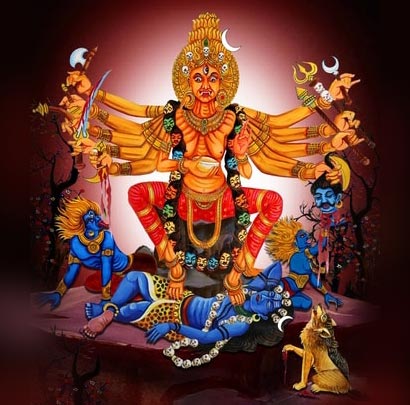
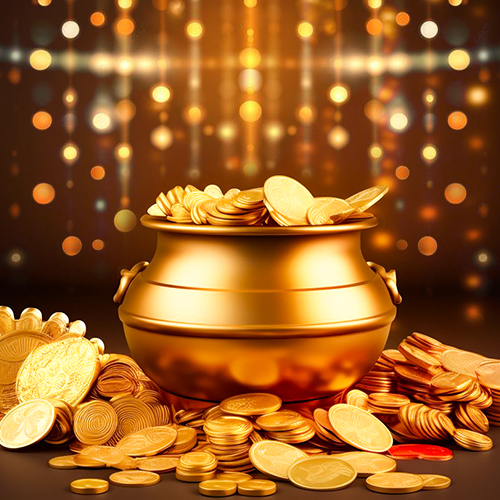
-in-Astrology.jpg)
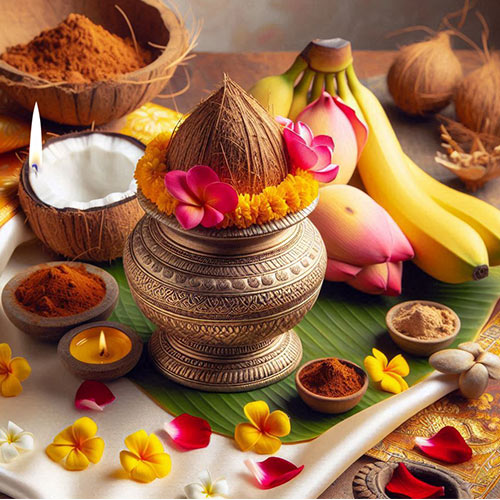
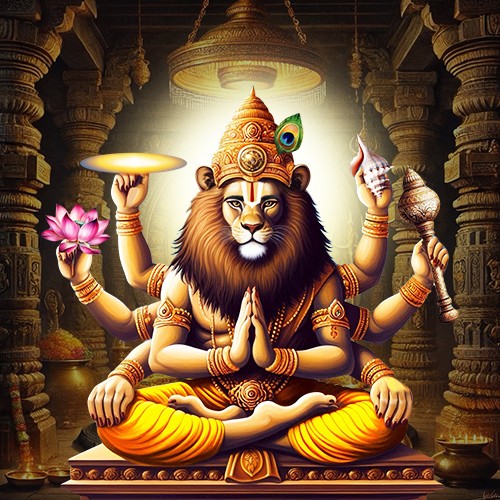
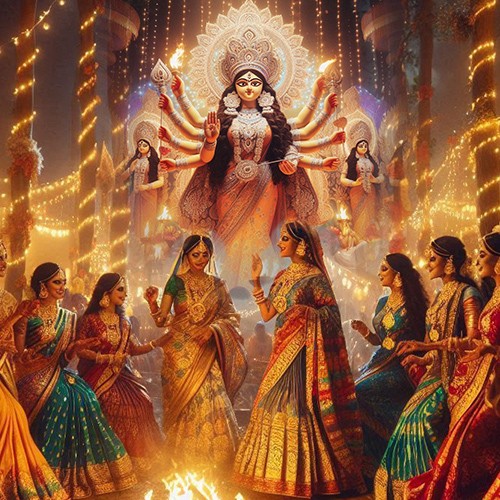
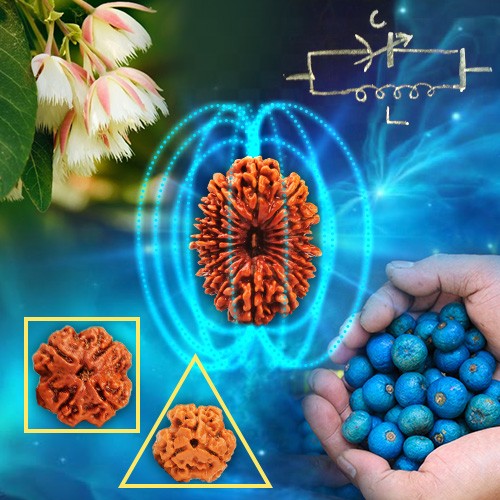

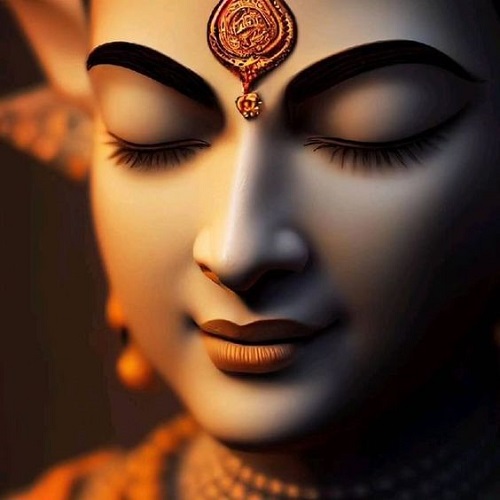
.jpg)
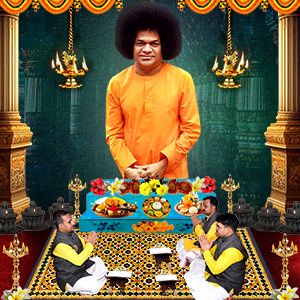
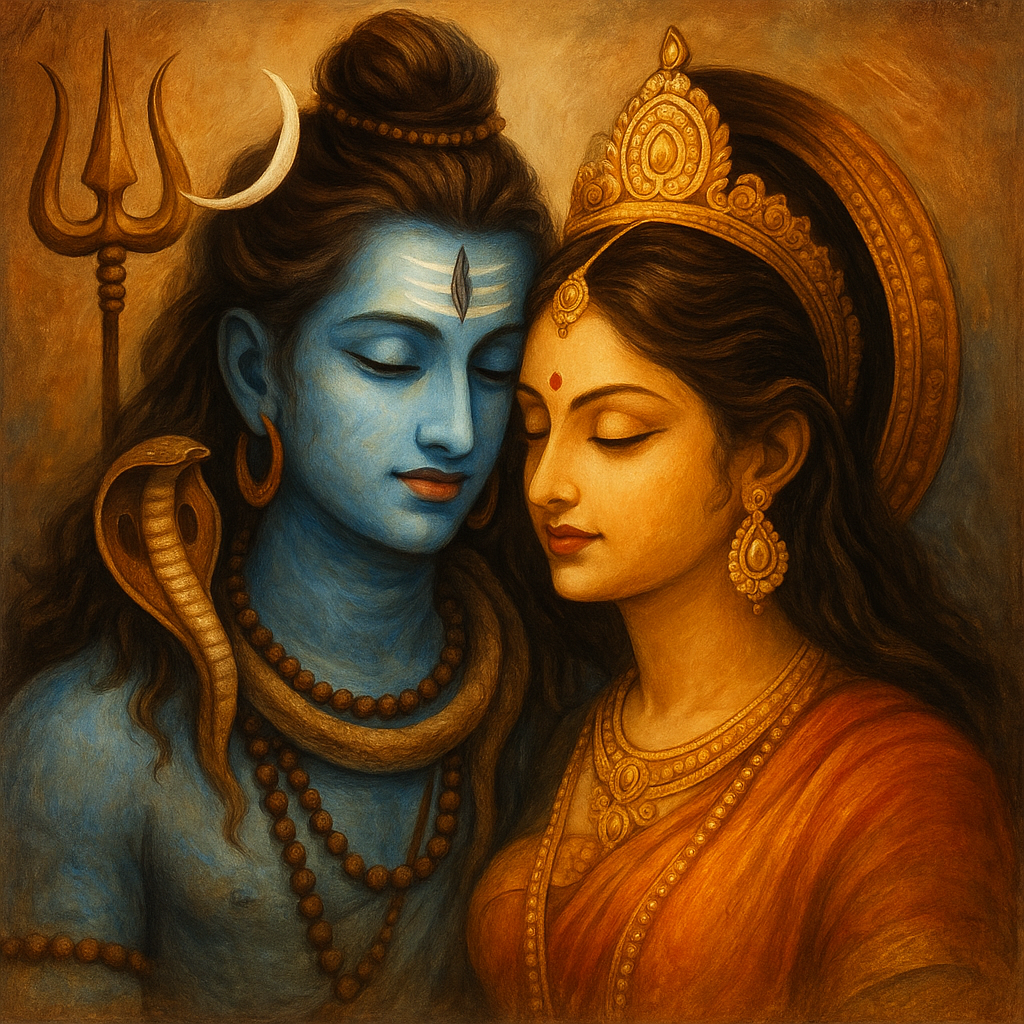
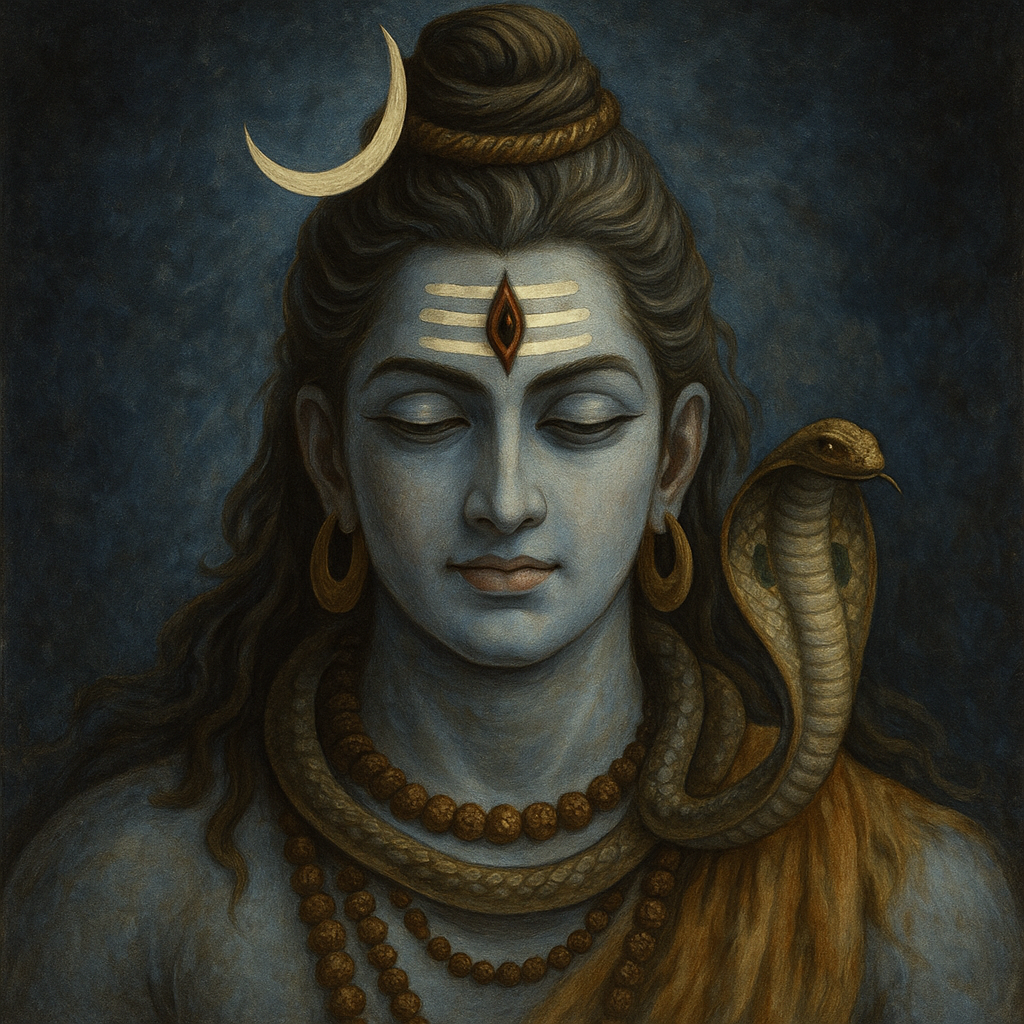
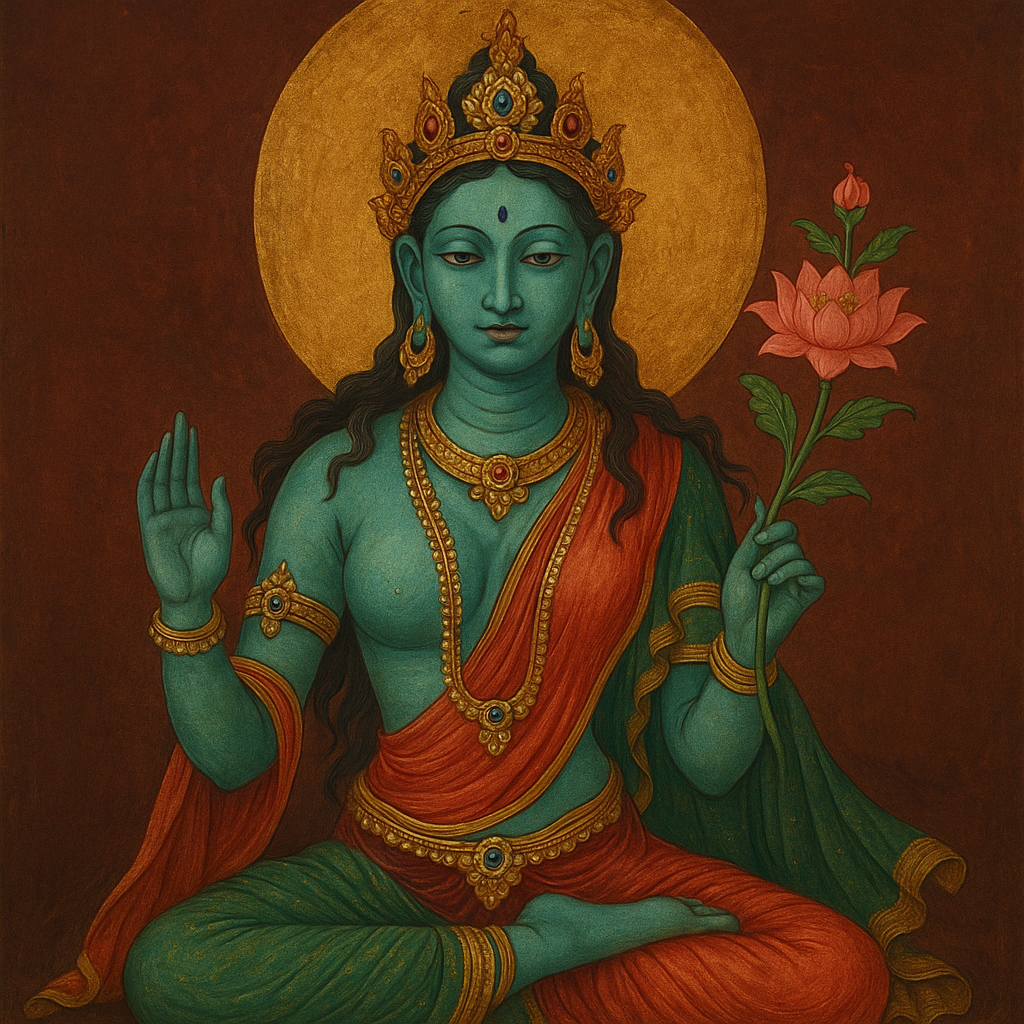
Comments 0
Leave your thought here